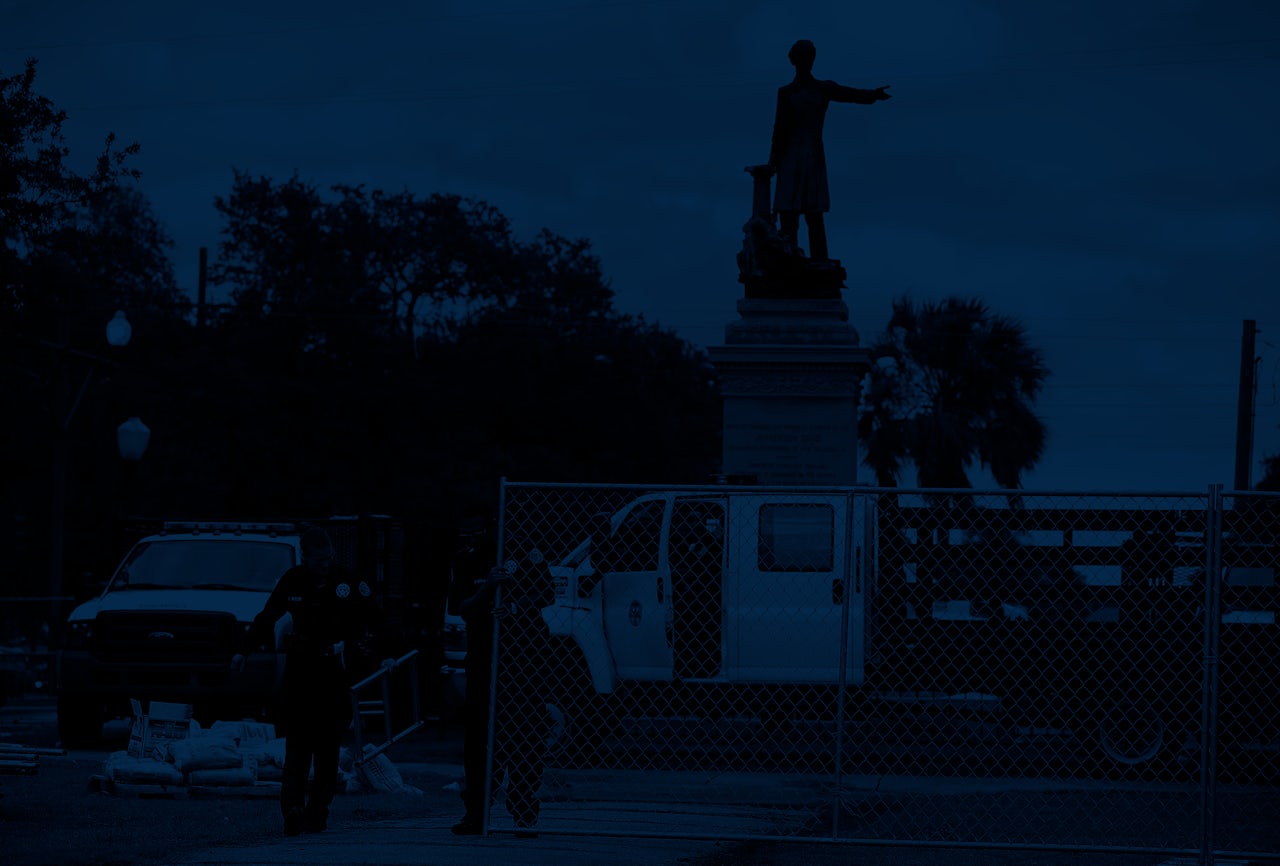The new world, dragging itself sticky and stinking out of the swamps, has an answer for all your problems: you should learn to code. The old certainties are gone, the natural world is dying, and the sun that once looked down on us is being blacked out by an endless swarm of automated delivery drones. You can no longer expect forty years of drudgery and then a spluttering death from good old-fashioned blue-collar pneumoconiosis. You can’t make it through life hating your boss instead of yourself, not when new forms of labour discipline demand that you be your own boss. Your flesh is already obsolete. But there’s an answer: to survive in the coming era of automation, you have to bring it in faster; announce its apocalypse, learn to code, add yourself to the army of programmers building an appier tomorrow.
Kentucky has a startup training former coal miners as software engineers. Across the country, there are boot camps teaching computer languages to the long-term unemployed, with no fees until you land your first job. It can be grotesque — if the economic structure of society is failing to meet people’s needs, it’s quite a leap to blame the people affected for not having the right skills — but this is, at root, a utopian promise. All the prejudices and stupidities that churn beneath our vague, signifying human language will be wiped away by the world that’s coming, expressed in the blank mathematical intricacies of code. Your age or race or gender don’t matter; they belong to the age of objects. Just learn how to code, and you’ll be fine. But something’s missing. Code what? To do what? And why?
In New Orleans, at this month’s Collision conference — America’s fastest-growing tech expo, a vast temple for our infinitarian demiurge, frantically creating a world it does not understand — I discovered the answer: nobody really knows. At a roundtable I somehow ended up chairing, it was suggested that as a result of large-scale automation, coding would become universal; everyone would be “a chef and a programmer, a garbage man and a programmer.” But if all the work goes to machines, how do all these new programmers feed themselves. The unspoken answer: by going to Collision. Beneath the titanic upper reaches of the tech industry, where squat little moguls sit on their vast piles of money and ramble idly about how empowering it is for everyone, teems an underworld of tiny start-ups, all desperate to be the next Amazon or the next Uber, all knowing that if they fail it’ll be bankruptcy, penury, and death. And conferences like Collision, TechCrunch Disrupt, or Web Summit in Europe, are where the pre-dead make their bleating gasps for life.
Code what? To do what? And why?
Desperation is everywhere; exhibitors make lunging grabs for any passers-by wearing an “INVESTOR” lanyard, proffer stickers and goodies, scream for attention on their convention-standard signs. These do not, to put it kindly, make a lot of sense. “Giving you all the tools you need to activate and manage your influencer marketing relationships,” promises one. “Leverage what is known to find, manage, and understand your data,” entices another. The gleaming technological future looks a lot like a new golden age of hucksterism. It’s networking; the sordid, stupid business of business; pressing palms with arrogant pricks, genuflecting to idiots, entirely unchanged by the fact that this time it’s about apps and code rather than dog food or dishwashers.
None of these start-ups are doing anything new or interesting. Which shouldn’t be surprising: how often does anyone have a really good idea? What you actually get is just code, sloshing around, congealing into apps and firms that exist simply to exist. Uber for dogs, GrubHub for clothes, Patreon for sex, Slack for death, PayPal for God, WhatsApp for the spaceless non-void into which a blind universe expands. The constant recombination of worn-out elements. Companies that make useless products to help other companies make useless products that help other companies make useless products. There are start-ups that spend tens of thousands on names and branding before they even come up with a product or see if anyone might want it. This is called innovation, but what it actually represents is a culture that piles up the garbled detritus of the old in lieu of creating anything new, and a morbid economic order drowning in its own surplus liquidity and willing to invest in any bubble that comes along.
Capitalism doesn’t know what to do with its surpluses any more; it ruthlessly drains them from the immiserated low-tech manufacturing bases of the Global South, snatches them away from a first-world population tapping at computer code on the edge of redundancy, but then has nowhere better to put them than in some executive’s gold-plated toilet. This soil breeds monsters; new, parasitic products scurry like the first worms over the world-order’s dying body. The “Internet of Things” is meant to be the future, but it mostly looks like a farcical recomplication of what we already had: a juice press that needs to scan a QR code and connect to your wifi before it’ll exert functionally the same amount of pressure as a pair of human hands, a wine bottle that connects to the internet and only dispenses proprietary wines, light bulbs that burn out or flicker maniacally if you haven’t installed the drivers properly.
For a few lucky companies selling these moronically “smart” objects, there are ludicrous millions in investor funding. Not because they’re any good, but because markets are volatile and governments are issuing negative-yield bonds and there’s nowhere else for all the ruling class’s extra money to go. Time is not moving us forwards. There has not been progress. The tech boom is not the first trembling steps of a new era. Its growth and dynamism is the halo of rot spreading over the globe.
This was Collision’s first year in New Orleans; previously it was held in Las Vegas. As the New Orleans Advocate put it, this was “New Orleans’ coming-of-age tech moment.” But if tech really is the future, the conference would have seemed to make more sense in Vegas. A depthless city, shimmering on the surface of the desert, where all local history was blown away by nuclear tests, and the aching story of the species is slit into ribbons and reassembled into themed hotels and casinos. A blasphemy. Visions of the future are utopian or dystopian, they describe crystal spheres of endless and uninhibited enjoyment, or cannibal wastelands splattered with the excesses of sadism and power. Both are just different ways of describing Las Vegas. New Orleans is different: it seems swamped in its own past, seeping with stink and magic.
Louisiana has the highest incarceration rate in the world, nearly twice that of the United States as a whole. For black people it’s even higher: 2,749 per hundred thousand are imprisoned — for comparison, that number was 612 in South Africa in 1984, at the height of apartheid. The Louisiana State Penitentiary was once a plantation, and still is: inmates, most of them black, pick cotton in its fields, watched over by guards, most of them white. In Baton Rouge, the cooking and cleaning in the state capitol is carried out by prisoners; others are posted to do domestic work in the governor’s mansion. From New Orleans, tourists are offered plantation tours; I took one. “Feel the gentle breeze of Southern hospitality,” the promotional material promised, “on a tour that takes you back to the glory of the Old South!” You will get to relive, it said, “a bygone era.” On our wander through house, the guides lingered over the portraits of the commandants; their loves, their passions, their glories, the rich sepia tragedy of their downfall. The slave quarters were recreated in the endless rain outside. Nobody mentioned their names.
Tech is the halo of rot spreading over the globe.
And then, of course, there were the statues. All of New Orleans’ Confederate memorials have now been taken down, but it wasn’t without a fight. Some forty blocks north from the convention, I saw a clump of heavily armed men in Duck Dynasty outfits standing around the statue of Jefferson Davis that stood off the Jefferson Davis Trail and flanked by the Jefferson Davis Parkway, trading insults with an opposing crowd of communists and anti-racists. The neoconfederates were belligerent, and gruff, and doing everything possible to radiate an image of untroubled hypermasculinity; they were also the most abjectly cowardly people I’ve ever seen in my life. At one point, one of the protesters fired a can of Silly string harmlessly towards a man’s head; he responded by spraying bear mace in a wide arc at everyone within range. Most of the time, these rugged individualists quavered for police help. I watched one man, bearded, with an AR-15 slung from his waist, get spit on by a demonstrator. “Officer!” he yelled. “She’s got AIDS! She’s got AIDS! I’m being assaulted!”
These people wouldn’t have said they condoned slavery, of course; they were just defending their heritage. They were fighting against the erasure of history. As the past is ruthlessly trod underfoot downtown at Collision, stamped out by a blind and soulless technical inhumanity, they represented a world that had been lost: mint juleps, hospitality, loyalty, and pride. It’s not hatred, the line goes; these symbols make us feel proud, they make us feel at home, they give us pleasant feelings, and how could that possibly be evil? Except that this is exactly what mass organized evil is: never cold interstellar madness, but a warm cozy home, where mothers love their children, and people are whipped to death outside.
The past that needs to be saved or erased exists now; it’s something that’s continually produced around us. “Only in the present,” the Haitian historian Michel-Rolph Trouillot writes, “can we be true or false to the past we choose to acknowledge.” The lost-cause myth, all the language of bygone eras and forgotten glories, relegated those statues that were until recently still standing into the past; in the same way, hyperventilation about entrepreneurship and innovation tries to project some dismal software into the future. Neither is true: both the apps and the statues belong to a contested present. The statue of Jefferson Davis is not a relic of a lost Confederate past: it was erected in 1911, fifty years after the Civil War. It’s not the past that was taken down with it; the past died with its moment, and bussing tourists into the scene of its horrors can’t bring it back. The fact that prisoners in Louisiana do slave work for barely improved wages isn’t an anachronism that needs to be updated, but the product of power relations that exist right now. What they represent is the exhaustion of the present, its inability to turn itself into something different from what was there centuries ago. And the shining new world of programming and start-ups represents exactly the same thing.
Collision promised to roll its convention-center carpets and lanyard-based class system over the bleeding swamps of the Mississippi, trapping all the old ghosts and injustices under digital gloss and corporate-culture banality. It can’t. Behind the network-ready grins of all the digital sibyls, beaming about smart appliances and AI interfaces from dozens of stages, I could see something familiar from the Battle of Jefferson Davis Parkway: the rabid determination to keep on building a broken world. We don’t need a tech revolution, we don’t need to learn how to code. What we need, at long last, is for something to finally change.

